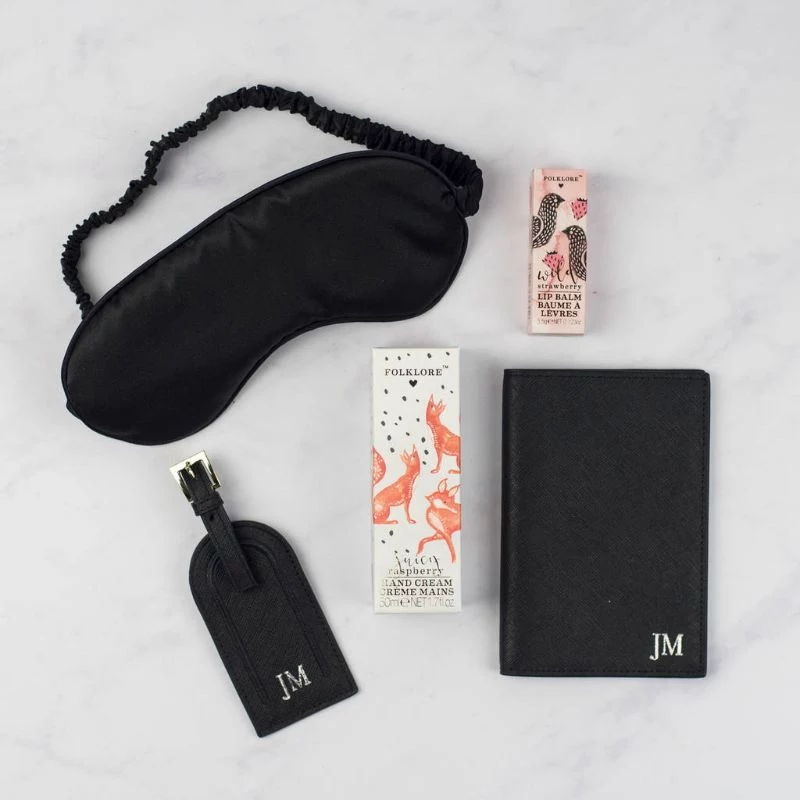Beyond the Bonus: A Real-Talk Guide to Employee Gifts That Actually Work
I learned my most important lesson about employee gifts the hard way, of course. Early in my career, running my first little team, I thought I had the perfect holiday idea. We’d just survived a monster of a year, and to celebrate, I bought everyone the same expensive, leather-bound planner. I was so proud of them. I figured the gift was professional, useful, and a nod to our shared goals.
In this article
- The Foundation: Why This Stuff Actually Matters
- First Things First: How Much Should You Even Spend?
- Principle 1: Know Your Culture, Know Your People
- Principle 2: Aim for Equity, Not Equality
- Principle 3: The Not-So-Fun (But Critical) Tax Stuff
- A Pro’s Guide to Gift Categories That Don’t Suck
- The ‘No Budget? No Problem.’ Power Move
- Gifting for a Global, Remote Team
- Your Action Plan: A Quick Checklist
- Final Thoughts: The Message Is Always the Gift
- Inspirational Gallery
The reaction? Tepid at best. A few polite “thank yous,” and one person even asked if they could return it. Ouch. Later, a manager I trusted pulled me aside and gently explained that half the team was 100% digital. For them, my thoughtful gift wasn’t just useless; it felt like a signal that I didn’t know them at all. I had given a gift that I thought was great, completely missing the mark on who was receiving it. It was a failure of recognition, not a failure of budget.

That one experience completely reshaped how I think about company appreciation. It’s not about how much you spend. It’s about the message you send.
So, this guide is built on years of refining that approach. We’re going to skip the generic lists and build a real framework for a gifting program that makes your team stronger, builds loyalty, and leaves people feeling genuinely seen. This is way bigger than a holiday bonus; it’s a cornerstone of your company culture.
The Foundation: Why This Stuff Actually Matters
Before we get into the what, we have to nail down the why. In business, we’re always chasing metrics like productivity and retention. Well, a smart gifting strategy directly juices those numbers. It all comes down to simple human psychology—when someone gets a thoughtful, personal gift, it triggers a sense of connection and makes them want to give back. It’s not a transaction; it’s a sign that their hard work is being noticed by a real person, not just a faceless company.

Think about it. The cost to replace a good employee is staggering. We’re talking anywhere from half to double their yearly salary once you factor in recruiting, training, and lost productivity. A consistent, thoughtful recognition program is honestly one of the most cost-effective retention tools you have. It’s a small, repeated investment in the people who make your business run.
First Things First: How Much Should You Even Spend?
Okay, let’s tackle the question everyone asks first: “What’s the budget?” There’s no single right answer, but here’s a practical way to think about it. For major occasions like holidays or big milestones, a budget of $75 to $150 per employee is a solid range. It’s enough to get something genuinely high-quality without breaking the bank.
For a year-round program, some companies allocate a small percentage of payroll, maybe 1%, to a general recognition fund. This can cover smaller, spontaneous rewards. The key is to decide on a number so you can plan effectively. A small, well-planned budget is infinitely better than no budget at all.

Principle 1: Know Your Culture, Know Your People
That planner disaster taught me rule number one: a gift is only as good as its relevance. You can’t succeed here without doing a little recon work. And no, guessing doesn’t count.
For years, my teams have used a simple, anonymous survey to get a real feel for what people value. The trick is to ask questions that reveal preferences, not just ask what they want. By the way, you can build this in about five minutes using a free tool like Google Forms.
Here are a few questions you can literally copy and paste:
- How do you prefer to unwind after a busy week? (e.g., quiet time at home, a nice meal out, an activity with family, getting active outdoors)
- What’s one small thing that would make your workday a little bit easier or more comfortable?
- If you had an extra $100 to spend on a hobby or personal interest, what would you use it for?
- What’s more valuable to you: a gift for you to use at home, or a tool to improve your work setup?
The answers are a goldmine. If your team is full of introverts who love quiet time, a mandatory loud party is a terrible gift. If they’re all about family, maybe a gift card for a pizza night or a local museum pass is the winner. This isn’t about letting them pick their own gift—it’s about gathering intel so you can make a smarter, more empathetic choice for them. It shows you’re listening.

Principle 2: Aim for Equity, Not Equality
This is a concept that trips up a lot of leaders, so let’s break it down. “Equality” means giving everyone the exact same thing. It’s easy, but it’s lazy. “Equity” means giving everyone something of similar value and thoughtfulness that’s relevant to them personally. It takes a bit more effort, but the impact is massive.
Let me show you what I mean:
- Equality looks like: Giving every single employee a company-branded fleece jacket. Seems fair, right?
- Equity looks like: Giving the folks in the chilly northern office that fleece jacket, while offering the team in the sunny southern office a high-end beach towel and cooler bag of the same value.
See the difference? One way we’ve managed this is by creating a curated choice system. You set a budget—let’s say $125 per person—and then offer 3-4 excellent options within that price range.
- Option A: A pair of high-end, noise-canceling headphones (for focus).
- Option B: A gift certificate for a popular local restaurant group (for social connection).
- Option C: A subscription to a wellness app plus a box of self-care items (for health).
- Option D: A donation in their name to a vetted charity (for purpose).
This approach keeps the budget under control while giving employees the power to choose what they’ll actually use and love. It respects their individuality and treats everyone with equal consideration.

Principle 3: The Not-So-Fun (But Critical) Tax Stuff
Heads up! This is where so many well-meaning companies get into trouble. A gift isn’t always just a gift in the eyes of the government. Now, I’m not a tax pro, and you absolutely must talk to your accountant. But as a leader, you need to know the basics to avoid some nasty surprises.
In the U.S., the IRS talks about de minimis benefits. These are gifts so small in value (think a box of donuts, a holiday ham, or a logo mug) that tracking them is impractical. These generally aren’t counted as taxable income for the employee.
Here’s the kicker: cash and cash equivalents are almost always taxable income, no matter how small the amount. That $100 Visa gift card you were about to hand out? It’s a cash equivalent. It has to be reported as income, and payroll taxes get taken out. So your generous $100 gift suddenly becomes a confusing $75-ish paycheck line item. That can turn a nice gesture into a real frustration.

Good to know: If you want to dive into the nitty-gritty yourself, you can search for “IRS Publication 15-B, Employer’s Tax Guide to Fringe Benefits.” But please, I’m begging you, make talking to your accounting pro a non-negotiable step before you buy a single thing.
A Pro’s Guide to Gift Categories That Don’t Suck
With our framework in place, let’s look at common gift categories with a more strategic eye.
1. Branded Swag That People Actually Want
Let’s be honest: most company swag is cheap junk that broadcasts your logo and ends up in a donation pile. To do it right, it has to be about quality and pride, not just branding.
- Invest in Quality: A cheap, scratchy t-shirt is an anti-gift. But a high-quality, comfortable fleece from a respected outdoor brand with a subtle, tasteful logo? That’s something people will actually wear with pride. Yes, it costs more, but the return is real.
- Make it Genuinely Useful: Think about what people use every day. We once gave out premium insulated tumblers from one of those brands everyone loves. They’re amazing products that cost around $35-$45, and employees used them constantly. It was a positive, daily reminder of the company.
- Quick Tip: For quality stuff, look for boutique swag vendors that specialize in curated, high-end items. They’ll help you find things that don’t feel like generic trade-show giveaways. And always, always get a sample first!
Oh, and a big cautionary tale on this one: lead times. I once waited until early November to order branded jackets. Big mistake. Everything was either sold out or had an 8-week delivery time. Plan to order major holiday gifts in September. Seriously.

2. Tools That Invest in Their Success
Gifting high-quality gear for the job sends a powerful message: “We want you to have the best tools to succeed.” This is especially true in a remote or hybrid world.
- Better A/V Gear: A top-tier webcam, which can run about $150-$200, or a professional USB microphone, usually in the $100-$130 range, can be a game-changer for anyone in client-facing roles.
- Ergonomics: A high-quality ergonomic mouse or keyboard is a direct investment in your team’s physical health. It shows you care about their long-term well-being.
- Home Office Stipend: Give them a $250 stipend to buy what they truly need—be it a better chair, a good lamp, or a standing desk converter. It’s personal, equitable, and incredibly effective.
3. The Priceless Gift of Time
Time is often the most valued gift of all. Closing the entire company for the week between Christmas and New Year’s is an incredible gesture. Or, you can offer a couple of extra “floating holidays” that people can use for what matters most to them. A quick warning: be crystal clear about the terms. Does the time expire? Can it be paid out? Get HR and legal to help you document the policy to avoid any confusion.
4. Experiences and Connection (Done Right)
Shared experiences can be amazing, but a mandatory party can be a nightmare for introverts or parents. The key is always choice and inclusivity. Instead of one big event, consider offering vouchers for things people can do on their own time—like a cooking class, movie tickets, or a MasterClass subscription. If you do a team event, make it optional and get feedback first. I once approved a go-karting event, only to find out one person had a fear of driving and another couldn’t physically participate. They felt awful and excluded. It was a tough lesson: always have a low-key alternative, like a nice lunch or board games, for any physical event.
The ‘No Budget? No Problem.’ Power Move
Feeling overwhelmed by the cost? The most powerful recognition is often free. A specific, sincere, handwritten thank-you note is one of the most impactful gifts you can give. Not an email. A real note. Mention a specific project they crushed or a time they went above and beyond. It costs nothing but five minutes of your time, and it’s something people will save for years.
Gifting for a Global, Remote Team
Managing gifts for a distributed workforce is a logistical headache. Shipping to ten different countries means customs, taxes, and lost packages. A $100 gift can easily cost you $200 by the time it arrives.
The solution? Look for a global gifting platform. You can find them by searching for terms like “global employee rewards platform” or “international corporate gifting service.” These companies have networks of local vendors, so an employee in Spain can choose a gift basket from a local shop, while someone in Japan gets a delivery from a local retailer. It’s a game-changer for global teams.
Your Action Plan: A Quick Checklist
Feeling ready to start? Here’s a simple plan to get you going:
- Set Your Budget: Decide on a per-person amount or an overall fund for the year.
- Survey Your Team: Use a simple, anonymous form to gather intelligence on their preferences.
- Choose an Equity-Based Approach: Plan to offer curated choices rather than a one-size-fits-all gift.
- Talk to Accounting: Before you buy anything, get clear on the tax implications of your ideas.
- Select Thoughtful Gifts: Use your survey data to choose high-quality items, tools, or experiences.
- Plan Ahead: Order physical items at least 2-3 months in advance, especially for the holidays.
- Communicate Clearly: Announce the gift or program with a message that explains the “why” behind it.
Final Thoughts: The Message Is Always the Gift
After years of experiments, a few successes, and some memorable failures, my philosophy is simple: employee gifting isn’t just an HR task. It’s a leadership opportunity. It’s one of the most direct ways you communicate what your company truly values.
Are you transactional or relational? Performative or authentic? Do you see your people as resources or as human beings? Your approach to gifting will give your team the answer.
So start small, be thoughtful, and never forget the lesson of the leather planners. The best gifts are never about what you want to give. They’re about who you’re giving them to.
Inspirational Gallery
A Gallup study found that only one in three U.S. workers strongly agrees they received recognition or praise for doing good work in the past seven days.
This isn’t just a feel-good metric; it’s a direct indicator of engagement. Spontaneous, small-scale recognition can bridge this gap far more effectively than a single, large annual gift. Think about creating a ‘recognition budget’ for managers to use for on-the-spot rewards, like a coffee for nailing a presentation or a gift card for staying late to solve a problem.
The Branded Swag Trap: A cheap, logo-splashed power bank that dies after three uses sends a message of disposability. The same goes for ill-fitting t-shirts or leaky water bottles. These items often feel less like a gift and more like a human billboard advertisement for the company.
The Thoughtful Alternative: Invest in high-quality, minimally branded (or unbranded) items. A durable backpack from Cotopaxi or a best-in-class portable speaker from JBL shows you value quality, just as you expect them to. The employee will actually use it, generating genuine goodwill.
Let’s talk about the unboxing experience. A great gift handed over in a plastic bag feels like an afterthought. The presentation is half the battle and dramatically shapes the perception of value. Consider using services like Lumi for custom, eco-friendly packaging or simply investing in quality boxes, tissue paper, and a handwritten note. It transforms a simple object into a memorable event.
- Boosts team morale after a tough project.
- Feels more personal and sincere than a scheduled bonus.
- Shows you’re paying attention to the day-to-day grind.
The secret? The ‘Just Because’ gift. It’s a small, unexpected token of appreciation given outside of holidays or performance reviews. A surprise delivery of cookies from a local bakery like Levain or a desk plant from The Sill can have a surprisingly outsized impact on an employee’s week.
Are employee gifts actually tax-deductible?
It’s a common question with a nuanced answer. The IRS allows businesses to deduct the cost of ‘de minimis’ (minimal value) gifts, which are occasional and not a form of disguised compensation. A holiday turkey or a small birthday gift generally qualifies. However, cash, and cash equivalents like general-use gift cards, are almost always taxable income for the employee, regardless of the amount. For any large-scale gifting program, a quick chat with your accountant is a must to avoid unpleasant tax surprises for your team.
Globally, experiences are now valued more highly than possessions by over 75% of millennials.
This generational shift is key to modern gifting strategy. Instead of another item to clutter a desk, consider giving a memory. Platforms like Blueboard and Tinggly allow you to offer employees a curated menu of experiences—from pottery classes and professional cooking lessons to weekend hiking trips. It’s a personal, unforgettable gift that says, “Go enjoy your life, you’ve earned it.”
Creating a truly personal gifting program means knowing your team, but you don’t have to be a mind reader. Here are a few non-intrusive ways to gather intel:
- Onboarding Questionnaire: Include a few fun, optional questions in your new-hire paperwork. ‘What’s your favorite snack?’ ‘Coffee or tea?’ ‘What’s a favorite hobby?’
- Slack/Teams Channel: Create a #favorites or #random channel where people naturally share things they love, from a new hot sauce to a great book.
- Listen Actively: When a team member mentions they’re trying to read more, make a note. A future gift of a Kindle Unlimited subscription or an Audible credit will show you truly listen.
For the home-office hero: The Ember Mug², a smart mug that keeps their coffee or tea at the perfect temperature for hours. It’s a luxury item they probably wouldn’t buy for themselves but will use every single day.
For the foodie explorer: A curated subscription box from a service like SnackMagic, which allows them to choose their own snacks from a huge global marketplace. It’s interactive, personal, and delicious.
A gift’s impact is multiplied when it aligns with company values. If sustainability is a core tenet, reflect that in your choices.
- Conscious Step: High-quality socks where each pair supports a different cause, from planting trees to providing clean water.
- Patagonia Provisions: Responsibly sourced food and drink items that are perfect for creating a high-end, eco-conscious gift basket.
- Charity Choice: Give a gift card through a platform like TisBest, allowing the employee to donate the full amount to a charity they personally care about.
Important detail: Never give a gift that creates work for the recipient. That ‘amazing’ IKEA standing desk that requires two hours and an engineering degree to assemble isn’t a gift; it’s a weekend project they didn’t ask for. If the gift requires setup, offer a ‘white glove’ service or choose a user-friendly brand known for its simplicity, like Apple or Sonos.










